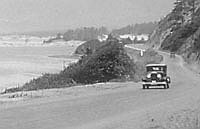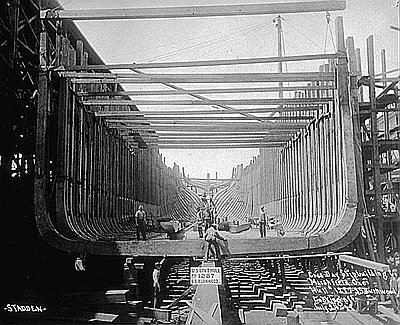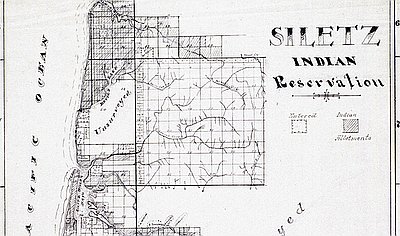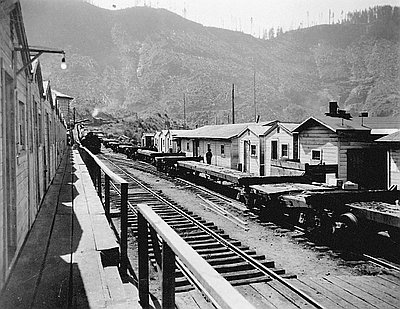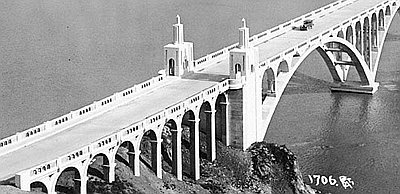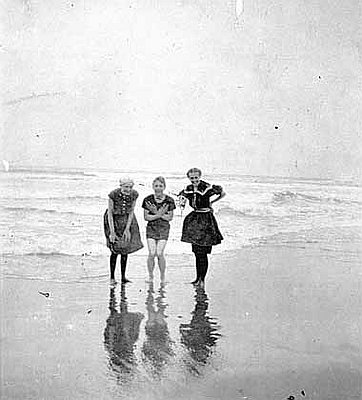Union Activity and World War I
In the early twentieth century, most loggers and millworkers lived in company-provided towns or camps, where the accommodations, food, pay, and working conditions could range from nearly adequate to awful. In what was a volatile economic environment, young, footloose men, unencumbered by families or possessions, made good workers. At the same time, however, the uncertainty and frustration of their lives made them good candidates for union activism.
The union movement in the early twentieth century flowed in two broad streams. Workers who had a skill could join one of the craft-based unions that made up the American Federation of Labor. These unions tended to be stable, stationary, and conservative—sometimes even banding together with owners against the more radical labor element, which they feared would discredit the entire union movement.
The other stream was made up of unskilled workers who were initially not welcome in the AFL’s craft-based unions and who found solidarity and a spirit of militant activism in industry-wide unions. The most famous of these was the Industrial Workers of the World. The IWW, also known as the Wobblies (an name that its members adopted and wore with pride), set out to organize miners, loggers, farmhands, factory workers, and millworkers. The union’s creed was made clear in its constitution: “The working class and the employing class have nothing in common.” For their part, the owners dismissed the IWW as the “I Won’t Work” contingent.
When the United States entered World War I in 1917, the IWW was in the middle of perhaps its most successful lumber-industry strike ever, which had reduced production to 15 percent of normal. In response to the vexing situation and hoping to corral activism and socialism, industry leaders lobbied the federal government on the virtues of spruce lumber. Spruce, they pointed out, was strong and lightweight, a perfect material for military aircraft. They succeeded in getting spruce declared vital to the war effort, and a strike was suddenly unacceptable.
The federal government created the U.S. Army Spruce Division, a civilian/military organization that put twenty-seven thousand soldiers to work in the lumber camps and sawmills and effectively broke the IWW strike. The government also created a huge company union, the Loyal Legion of Loggers and Lumbermen (the 4-L), whose members pledged not to strike. They did not have much reason to, for the government’s intervention into the industry had brought about many of the reforms for which the Wobblies had long agitated, including the eight-hour day.
As the first of 130,000 Pacific Northwesterners donned uniforms and went to war, the Spruce Division began its home-front effort to boost production. With Lt. Col. Brice P. Disque in charge, army troops built mills at Toledo on Yaquina Bay and at Vancouver and Port Angeles in Washington. In Oregon, the Spruce Division produced 54 million board feet of spruce beams for airplane wings during the war and built a modern electric sawmill and many miles of railroad track in Lincoln County. These eventually passed into private hands.
The war brought economic activity to the whole region, including the coastal communities. Shipbuilders in Astoria, Tillamook, and Marshfield contracted with the federal Emergency Fleet Corporation to build wood-hulled and steel ships for the war effort. Soldiers trained once again at Fort Stevens at Warrenton, near Astoria, which originally had been commissioned during the Civil War. Women throughout the Northwest, historian Carlos Schwantes, writes, “provided a variety of knit goods, staged benefits and bazaars to raise money for the Red Cross, and promoted the conservation of vital supplies of meat, wheat flour, and sugar. Some took jobs in business and industry when the war temporarily eradicated lines of distinction between “men’s work” and ‘women’s work.’” Women also served in uniform. At a time when they could not vote, more than thirty thousand American women served in the United Stats Army, Navy, Marines, and Coast Guard.
The armistice in 1918 brought poorer economic times. The cost of living, which rose sharply during the war, continued to rise after hostilities ceased. As shipping and lumber production scaled back to peacetime levels, many coastal residents were thrown out of work. In 1920, for example, seven thousand men were laid off from Oregon mills and logging camps.
Prices for farm commodities took a dive; and farmers, most of whom had gone into debt to expand operations to meet wartime demand, found themselves in severe straits. After a sharp depression in 1921, times got better relatively quickly in the cities, but rural areas, including those along the coast, continued to suffer.
In addition, peacetime introduced another, more deadly enemy to postwar Oregon—Spanish influenza. American casualties in World War I had numbered about fifty thousand; the flu pandemic took five hundred to seven hundred thousand American lives. The sickness, along with the flood of weary, wounded, shell-shocked, and undernourished soldiers returning from the front, the spread of Communism in the defeated European countries, and the economic downturn combined to narrow people’s outlook and sour their mood. More than fifty thousand people left Oregon for opportunities elsewhere after the war.
Among some of those who remained, the intolerance of African Americans, Catholics, and immigrants (especially German Americans) was expressed in an upsurge in Ku Klux Klan activity during the early 1920s. Klan members organized chapters in Astoria and Tillamook, as well as in Portland, Eugene, Medford, and smaller towns in Oregon. Fear of radicalism in general and union activism in particular sometimes led to violent clashes between labor activists and citizens-turned-vigilantes.
Such racist attitudes could be found in communities along the coast. Citizens in Toledo, for instance, formed the Lincoln County Protection League (LCPL) in 1925 to prevent Japanese, Chinese, Korean, Filipino, Asian Indian, and African Americans from working and living in the community. The formation of the LCPL was a reaction to the plan by the Pacific Spruce Corporation sawmill to hire a Japanese crew to work the graveyard shift, a decision that Toledo businessmen strongly protested. Despite their objections, however, plans to hire the laborers moved forward. On July 12, a mob of fifty men forced twenty-seven Japanese, four Filipinos, and one Korean onto trucks and drove them to the train depot in Corvallis. A year later, one of the victims, Tamakichi Ogura, filed a wrongful act lawsuit against nine member of the mob in the U.S. District Court of Oregon. Ogura won the suit, the first time a mob was found guilty of civil rights violations.
© Gail Wells, 2006. Updated and revised by OHP staff, 2014.
Sections
Related Historical Records
Loyal Legion of Loggers & Lumbermen Pledge
This “specimen” of the “Four-L Pledge” was originally devised under the leadership of the U.S. War Department’s Col. Brice P. Disque as part of a larger strategy to …
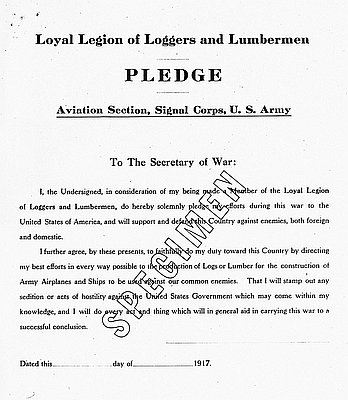
Shipbuilders Will Help
This illustration was published in a short-lived weekly newspaper produced by the Columbia River Shipbuilding Corporation (CRSC). Win the War, later renamed The Pilot, was issued in 1918 …

Spanish Flu in Astoria
This newspaper article was published in the Morning Astorian on October 2, 1918. It describes the arrival of “Spanish flu” in Oregon. “Spanish flu” was a particularly virulent …


